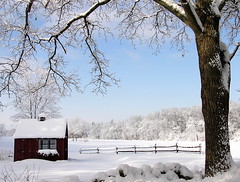 Yes, it’s almost Christmas and yes, there’s the tree to decorate, and those holiday cards aren’t going to print themselves, and you really should untangle those strings of lights. But winter isn’t just about Christmas so if you feel like taking a break from Santa and his friends here are a few tips for capturing some non-Christmas winter snaps.
Yes, it’s almost Christmas and yes, there’s the tree to decorate, and those holiday cards aren’t going to print themselves, and you really should untangle those strings of lights. But winter isn’t just about Christmas so if you feel like taking a break from Santa and his friends here are a few tips for capturing some non-Christmas winter snaps.
1. Get your equipment prepared. Don’t forget spare batteries (the cold will sap their energy faster) and try and think about packing some hand warmers in your camera bag to keep your camera all warm and toasty.
2. Overexpose! One of the main problems with photographing snow is the fact it’s so shiny and white. Your camera’s light metre will struggle with all that white shininess and read it as grey. Many point and shoot cameras have a “snow” mode you can use or for a DSLR try overexposing the shots (try +1 or +2 if you have automatic exposure compensation).
3. Try a graduated filter. For grey-sky days a graduated filter can give the sky a bit of colour and make the pictures look a little less overcast.









